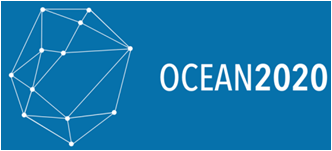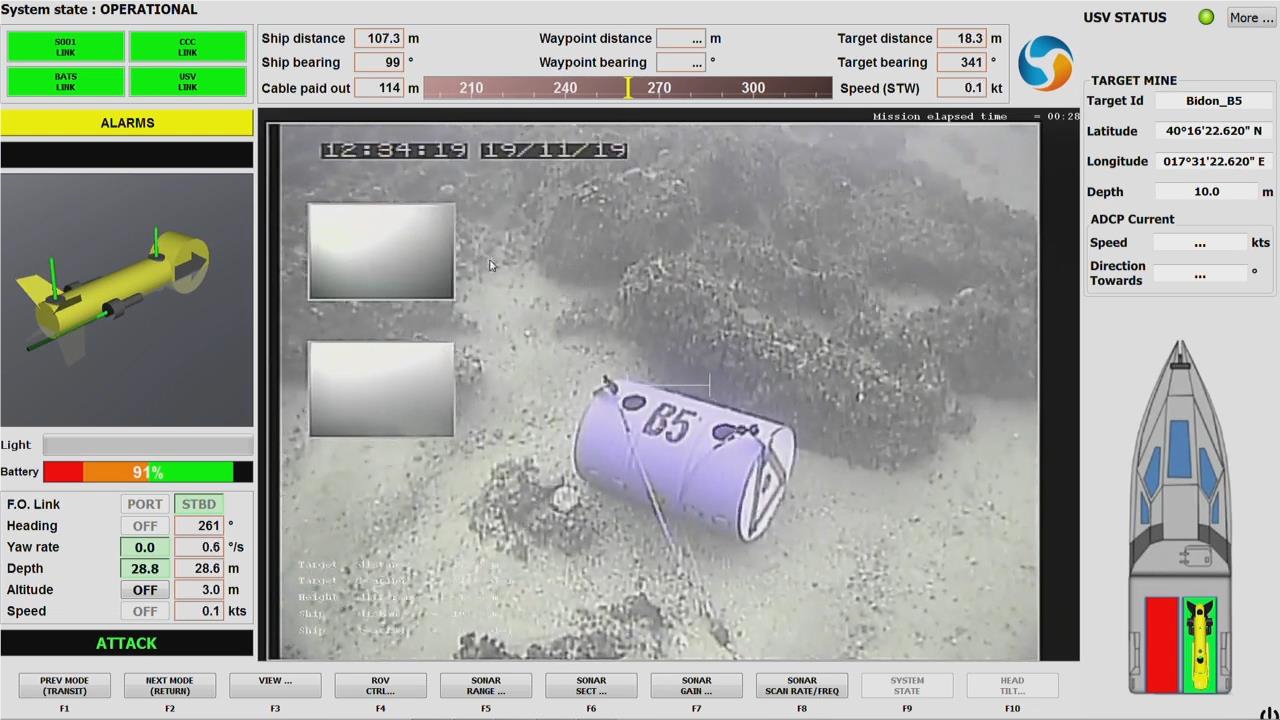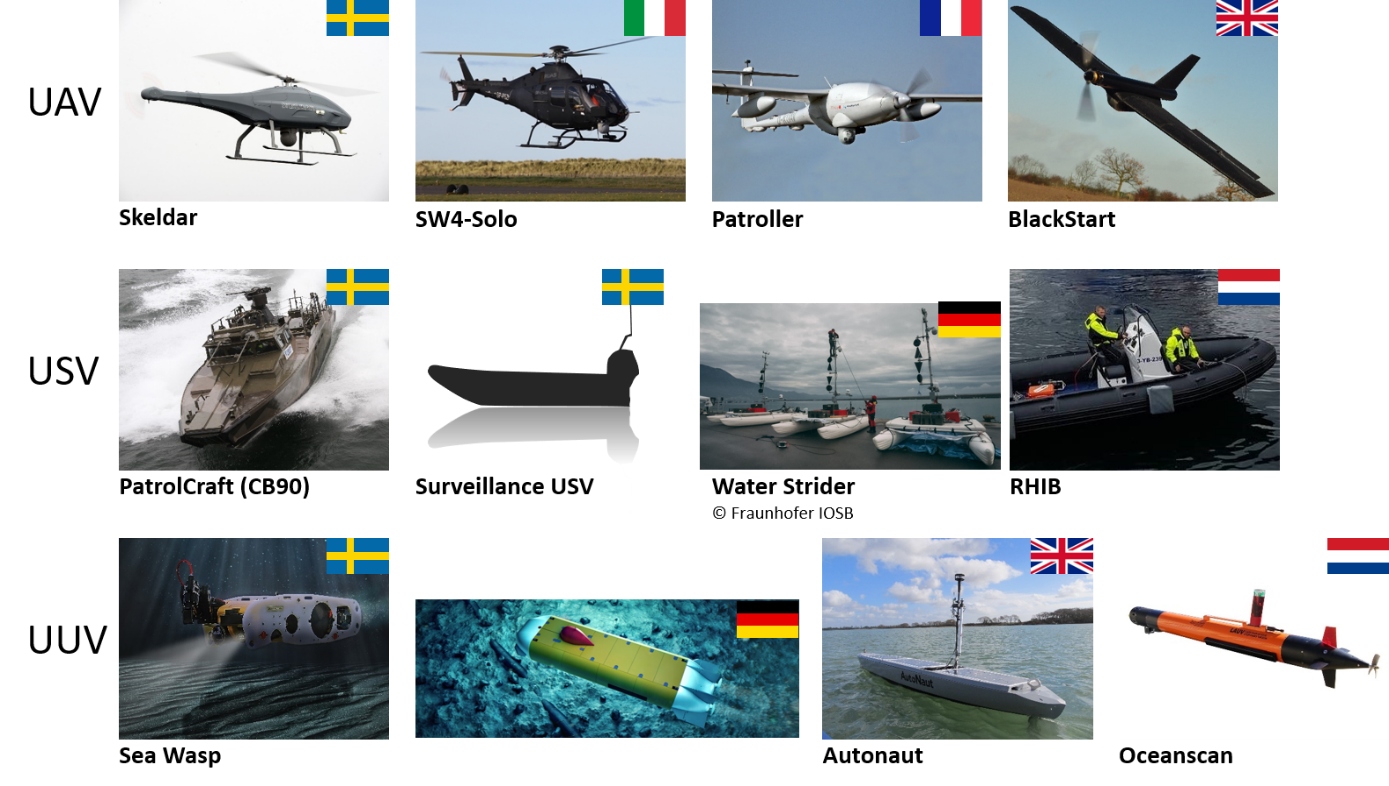In the research project OCEAN2020 technologies for maritime surveillance and reconnaissance are developed and tested.



Motivation
In multinational defense operations at the EU or NATO level, the exchange of surveillance and reconnaissance data is essential to enable rapid action. In the context of naval forces, the goal is to generate and maintain the recognized maritime picture that is available to all participants in the operation as a basis for decision-making.
Maritime Surveillance and Reconnaissance
ISTAR - the overall process of intelligence, surveillance, target acquisition and reconnaissance - is a key capability. Interoperability, open architectures and standardization ensure smooth interaction at all levels, from the individual sensor to the maritime operations center (MOC). The use of unmanned or even autonomous systems in addition to manned units has the potential to increase the range and continuity of maritime surveillance and reconnaissance and thus improve situational awareness.
Raising the technical capabilities in this regard to a new level promises the OCEAN2020 research project launched in 2018. It is funded through the European Union's Preparatory Action on Defence Research (PADR), and the project executing agency is the European Defense Agency. 43 partners from 15 EU countries worked in the project for three years on the networked maritime surveillance and reconnaissance mission of the future.
From drones to comprehensive situation picture
The ultimate goal of OCEAN2020 is to generate a comprehensive maritime situation picture for commanders at various levels of command. The main task is to integrate established and new technologies for unmanned systems (UxS), ISTAR payloads, and effectors, and to fuse the diverse data and information into a recognized situational picture. To this end, the system links unmanned platforms - in particular drones, unmanned surface vehicles and unmanned underwater vehicles -, their control stations and sensor data analysis and fusion functionalities with the ship's Combat Management System (CMS) at the tactical level.
The information fused at CMS level is made available to the higher echelons of command, i.e. in particular the MOCs at national and EU level, via established interoperable data distribution mechanisms such as CISE, MARSUR or CSD. These are thus directly linked to the operational commands and units, whereby it is configurable in each case which data is transferred to whom and at what depth of information.
The capabilities of the overall developed system has been demonstrated within the framework of OCEAN2020 in both simulated and live demonstrations.
OCEAN2020
The OCEAN2020 research project supports various areas of maritime surveillance. To this end, the total of 43 partners from 15 EU countries integrated drones, unmanned surface vehicles and unmanned underwater vehicles into fleet formations, with Fraunhofer IOSB contributing expertise in unmanned surface vehicles, unmanned underwater vehicles, swarming behavior of unmanned assets, automatic detection of ships in videos, system architecture, combat management systems and maritime situational awareness. Fraunhofer IOSB is the national coordinator Germany of OCEAN2020.
 Fraunhofer Institute of Optronics, System Technologies and Image Exploitation IOSB
Fraunhofer Institute of Optronics, System Technologies and Image Exploitation IOSB